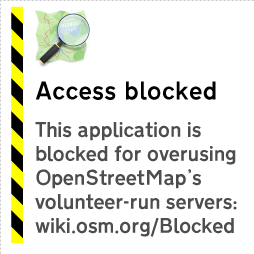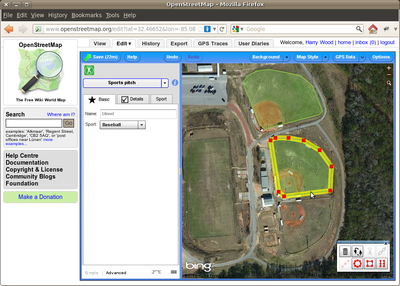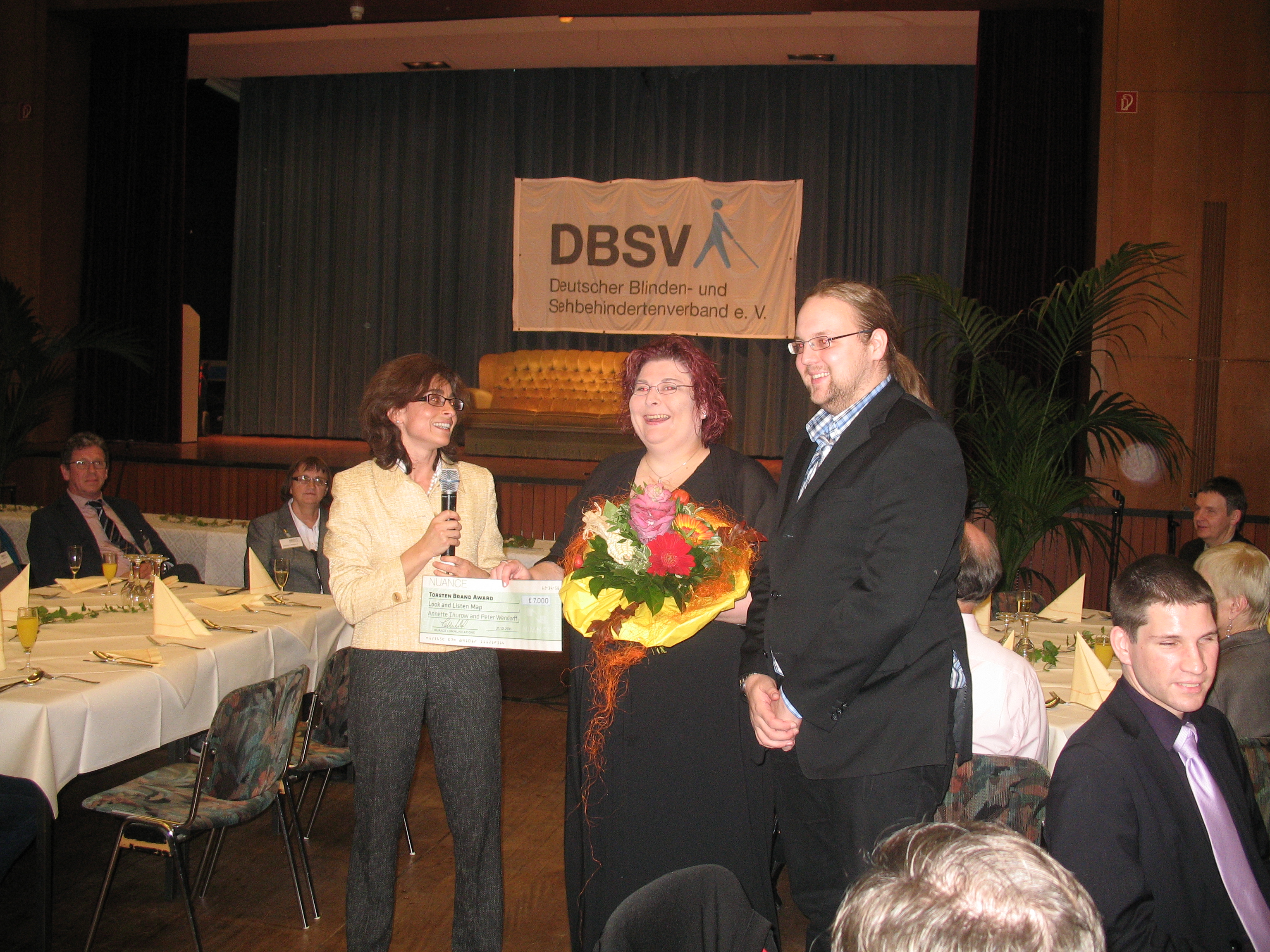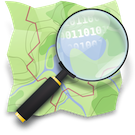Longtime OpenStreetMap contributor Balrog-kun is featured and quoted
in this article about OpenStreetMap in the Warsaw Gazette. The article was on the
front page of the print version of the newspaper on 05 November 2011.
Yearly Archives: 2011
Weekly OSM Summary #29
October 17th, 2011 – October 31th, 2011
A summary of all the things happening in the OpenStreetMap (OSM) world.
- During last weeks Google Doc Summit 2011 an OSM book for beginners has been created. You can buy it here and find a preview here.
- The translations of the documentations for our well-known OSM Editor JOSM for Arabic, Greek, Hebrew, Icelandic and Turkish don’t fulfill the minimum standards. You can help to improve it. Otherwise they will be dropped in future releases. Other languages require updates as well!
- The “ODbl coverage map” has been updated. The map shows the status of the OSM data related to the license change.
- For Toulouse (France) several datasets have been announced under the ODbL. Read more in our wiki.
- The official Maps for the “Giro d’Italia” are based on OSM data. Original – Translated.
- Annette and Peter won the inaugural Torsten Brand Award for their OSM project: “Look and Listen Map”. Keep up the good work!
- On October 23rd, 2011 an earthquake struck Turkey with a magnitude of 7.2. If you would like to help, you can find some information about which data sources you can use in our wiki.
- A new website with general OSM stats is online. It will be updated daily.
- Andy created a tool for Cyclestreets that imports and merges cycle way data of the Dft (Department for Transport) in Great Britain.
- The “London Cycling Guide” is now using OSM data. You can find a book review here.
- The “Heart of the Elephant and Castle Urban Forest Map” shows detailed positions of trees in London.
- Martin created an animation showing the mapping progress in Rome (Italy).
- You can add your ideas or suggestions for the Itomap to an OSM wiki page now. The First suggestions have been implemented already.
- Thomas developed a webpage which displays the data of several Web 2.0 services such as Wikipedia, Twitter, Flickr, Panoramio, Gowalla … on an OSM map.
- A really nice OSM map with 3D visualization for buildings in Poland.
- The Public Transport Map (OpenPTMap) will now be updated on a daily basis.
- A new PHP framework allows you to interact with the OSM API. Read a little bit more here.
- Matthias created some pie charts, which visualize the usage of the OSM tileserver by different programs and services.
- The Spanish administration has now an open data portal.
- At the OpenDataCamp several projects used OSM data. You can find the results in their wiki.
- The South African Census 2011 is using OSM for their “Verify Census Fieldworker” website (via Grant)
Did we miss something? You can contact us via weekly.osm@googlemail.com
Authors: Pascal & Dennis – (thx @ “Wochennotiz”)
Tile Usage Policy
We’ve had to block some uses of the OpenStreetMap Foundation tile servers. This article describes what is happening and why. This article also describes how you can adapt if you are affected.
We’re really proud of the increased popularity of OpenStreetMap. We’ve seen seven-plus years of project growth in every measurable area. As the project has grown we’ve learned and adapted in many ways. The use of our tile server has grown faster than every other aspect of the project. One way that we are adapting now, is by restricting how our map tiles may be used.
You’ll still be able to use our tiles in creative and interesting ways but the volume of use will be limited. We need to limit access to our tile server to only those users who don’t overburden our resources.
Those users who make large demands on our tile server will be slowed down by our throttling mechanism. This throttling mechanism is rarely triggered by mappers.

Problematic applications may show this image instead of a map.
Those applications which make exceptional demands in aggregate from their users will be blocked. The tile usage policy is on the OSM wiki.
So what can you do about this? How can you get the wonderful OpenStreetMap tiles for your mobile device?
- You can run your own tile server and serve tiles for yourself or your users.
- You can use an application from a developer that provides a tile server for you.
- You can use tiles created from OSM data, provided by a server that permits bulk downloading.
- You can buy tiles from a commercial provider.
You’ll find more advice about potential tile source alternatives on the wiki.
Read on if you would like to know more about the history of the OpenStreetMap tile server.
OSM tile server background
We started creating rendered images of our map data as a way to encourage our data contributors. Mappers enjoy seeing the results of their surveys on the OpenStreetMap web site, and they can be inspired to map in their neighbourhood the things they see other mappers surveying in other places. Mappers loved the tile server when it first appeared. Potential users often looked at the map in 2006 and said, “Hey, why is there a huge blank spot where my town should be?” Some of those potential users became the long-time contributors that we all know and love.
As more contributors mapped more neighbourhoods, more blank spots started to fill in. More potential users became actual users, and OpenStreetMap tiles started to appear in more places. The tile server became even more popular when rapid updates were enabled. Rather than updating the map every week, parts of the map could update as contributors added data. If you remember the weekly updates you also remember that funny tingle you had the first time you mapped something and it appeared on the map immediately; it seemed like magic, didn’t it?
The OpenStreetMap Foundation has had a tile usage policy for some time. From September 2008 it has been explicitly stated that bulk downloading of tiles was discouraged. OpenStreetMap kept growing. More people came to understand the awesomeness of OSM tiles.
Also in 2008, the Ordnance Survey started serving map tiles to users through their OS Openspace program. In July of 2011, Ordnance Survey served their one billionth tile to a user.
OpenStreetMap serves a Billion tiles every eleven days.
So we know a thing or two about providing awesome maps to users. We do it all with the crowd-sourced data from our contributors around the world, the volunteered time of our sysadmins who keep our servers running, and the generous donations of servers and bandwidth and funds.
We’ve had to become more restrictive of the use of our tile server over time. We’ve limited how many tiles you can consume in a period of time. These restrictions only affected the most-demanding of tile consumers. The everyday mapper never ran into a problem getting tiles to add data to OSM. That allowed the growing number of users to continue to have access to OpenStreetMap tiles without our resources being monopolized by one or two bad actors.
More and more mobile applications started using OpenStreetMap tiles. Many of them included a bulk downloading method so that tiles could be saved on the device at home, rather than downloading tiles at a punitive data rate. That bulk-downloading has always been problematic for OpenStreetMap because a single user will consume hundreds of times the resources of an average user. There are so many applications using OSM tiles, with so many users making unreasonable demands on our resources that it is affecting the quality of service for the average user. And that’s not fair.
So we’ve started blocking the applications that are causing us the most trouble, in addition to blocking users with problematic specific behaviours. We regret it, in a way. After all, we map because we want people to be able to use our data. But our resources have to be used in a way that everybody can share. We can’t have a small number of people consuming all of our resources.
So that’s why some people have started to see the “prohibited” tiles on their maps. Overuse. Or mobile applications that are causing overuse by a group.
Torsten Brand Award for Look and Listen Map OSM data
Congratulations go to OpenStreetMap contributors Annette Thurow and
Peter Wendorff for their project, Look and Listen Map. They won the inaugural Torsten Brand Award. The
Torsten Brand Award recognizes advancements in access to information
and communication for low-vision and blind users through practical
interaction with technology.
Read the full press release.
Weekly OSM Summary #28
October 5th, 2011 – October 17th, 2011
A summary of all the things happening in the OpenStreetMap (OSM) world.
- Nearly 100% of Denmark’s streets have been mapped by OSM. Currently 97.2% have been mapped. You can use a map or a form to search for missing ways.
- In Wales the road names show a completeness of more than 95%. Thx at Ito for their analysis. You will find further results at their webpage.
- The “Big Baseball Project 2011” tries to map all baseball fields around the world until October 27th, 2011. You will find the user ranking, a baseball-map and a beginner’s guide in our OSM wiki.
- France has now its own local OSM chapter.
- Martijn van Exel, Randy Hale, Jim McAndrew and Michal Migurski have been elected and Richard Welty has been reelected for the US local chapter. Congrats to them!
- Because of an Edit-War about the name of the city “Jerusalem” the name-tag will not be used any longer in this specific case. The question is should the name be written in Hebrew or in Arabic?
- The OSM Inspector “Routing view” is now available with a worldwide coverage. It shows errors in the OSM street network such as unconnected or duplicated ways. Read the full blog post and further news here.
- Researchers from the National University of Ireland, Maynooth conducted a „Comparison of the accuracy of OpenStreetMap for Ireland with Google Maps and Bing Maps“. Read their full paper here.
- The project OpenArialMap added some new images.
- Get your own Hiking Map in ten steps with Maperitive.
- Richard Fairhurst created a Ruby ODF Renderer for OSM data. Read his full announcement here.
- Peter Körner created some new extracts of the OSM full history database dump. His announcement at the OSM developer mailing list can be found here.
- Kai Krüger built some packages, to install and run your own OSM map tile server on an Ubuntu operating system. Find more information on the OSM wikipage.
- The Android app for the wheelmap.org project is now available at the Android market.
- “MapQuest launches Mobile Flash Maps API”. You can use it within Flash Builder 4.5 native mobile applications.
Did we miss something? You can contact us via weekly.osm@googlemail.com
Authors: Pascal & Dennis – (thx @ “Wochennotiz”)
Big Baseball Project 2011

To coincide with baseball playoffs and the World Series we’re running
a special mapping project:
The big baseball project!
Help adding baseball diamonds to OpenStreetMap. This is a really easy
type of map editing which anyone can get involved in, so give it a go,
and tell a friend! If you live in the U.S. (or some other baseball
fanatical part of the world) you can start by looking for baseball
diamonds near where you live, but these things are easy to spot in the
aerial imagery. This means everyone can help, from wherever you are in
the world. You can even contribute to the free world map while you’re
watching the MLB playoffs on TV!
We’re tracking baseball edits to bring you a rolling edits display and user rankings, but you’ve only got until
October 27th to become an OpenStreetMap baseball champion!
You’ll find more guidance on the wiki, plus a short press release.
OpenStreetMap Inspector helps you improve OSM data
OSM Inspector is a quality evaluation service that was created by GEOFABRIK. It draws attention to
potential errors in OpenStreetMap data so that mapper can inspect them
and if needed, repair them.
This tutorial shows you how to include OSM Inspector in your mapping
and includes instructions for JOSM and Potlatch2.
Weekly OSM Summary #27
September 19th, 2011 – October 4th, 2011
A summary of all the things happening in the OpenStreetMap (OSM) world.
- “LearnOSM.org provides a simple-to-use, step by step approach to learning how to make maps with OpenStreetMap”. Visit the new website here.
- The new OSM servers zark, soup, fiddlestick and eustace are online! Thanks to bitfolk.com and Nokia UK.
- “The Licensing Working Group has obtained explicit special permission to incorporate geographic datasets from data.gov.au in the OpenStreetMap project database published under any free and open license …“ Read the full announcement here.
- A new tool that helps to coordinate upcoming Humanitarian OpenStreetMap Team (HOT) projects is online. Read the full blog post about the “OpenStreetMap Tasking Manager” here. And the next HOT meeting will be on October 5th at 11pm.
- New international boundaries from the US Department of State are available. Read more here.
- Google released a new commercial spot for their Chrome browser in which they featured the Wheelmap.org project. Watch the German video on YouTube. Also, they are searching beta-testers for their Android-WheelpMap app. If you are interested, drop a mail to: android@wheelmap.org
- A nice blog post about mapping in Afghanistan.
- If you want to see “live” editing in the OpenStreetMap World, you can check “OSM Live“, “khtml.org” or “GeoXP“.
- A new blog post by Martijn van Exel: “Taking the Temperature of local OpenStreetMap Communities”.
- The Geofabrik also supports a free shapefile download of OSM land use areas now. You can read the full blog post here.
- OSMT is a new tool for splitting or merging OSM data.
- A new HTML5 demo shows the rendering of OSM data within the web browser. Try it out here.
- Michal Migurski provided a new website where you can download OSM data “for major world cities and their surrounding areas“. You can find it here.
- The 2.0 version of Mapnik is finally out! Mapnik is the software we use for rendering the main map layer for OSM.
- Michiel Faber and Guttorm Flatabø created a script that merges several GPS tracks into a “line of best fit” / average track.
Did we miss something? You can contact us via weekly.osm@googlemail.com
Authors: Pascal & Dennis – (thx @ “Wochennotiz”)
Using OpenStreetMap data
OpenStreetMap has always made geographic data available for use in
interesting and unexpected ways. As OpenStreetMap grows, the data
becomes more difficult for some users to consume purely because of the
volume of data.
The World at once

To have the whole World in your hand, download and use the planet file.
Planet files are published every week. As mentioned above, some uses
find this file large and cumbersome to deal with, especially if their
interest is limited to a small portion of the data set.
In September 2011, the planet file was 18GB when compressed and about
250GB when loaded into a spatial database.
Smaller portions
If your interests are limited to a portion of the planet, then you’ll
want to know more about planet extracts. Extracts are a portion of the OpenStreetMap data
set.

Extracts are provided by third-parties for single countries and and
also for regions that range from cities to states, provinces and
continents.
State of the Map 2011 wrap up
The fifth annual OpenStreetMap conference, State of the Map
, wrapped up in Denver, Colorado recently. Even if you were not able to join the fun in Denver, you can still enjoy parts of the event. Conference sessions were recorded by our friends at FOSSLC and many of those recordings are already available. You’ll also find audience video for some of the sessions.
Tagging a conference
If we were tagging SotM11 to add it to the OSM database, we might consider tags like:
- conferencename = State of the Map, 2011
- attendance = 273
- attendance:prepaid = 258
- attendance:walkin = 15
- attendance:attendee_countries = 34
State of the Map 2012
The call for venues for State of the Map 2012 is expected in November 2011. The SotM 2012 venue will be announced early in 2012.






